
Jaguar took nearly forty years to find a genuine successor to its iconic E-type. This book tells the fascinating, and sometimes frustrating, story of the journey from the iconic Jaguar E-type to its successor, the F-type.
With nearly 300 photographs, it documents the evolution of the F-type from the Pininfarina XJ Spider through Jaguar’s own XJ41/42, XX and XK180 and reviews the whole range of F- type convertible and coupe models, the more powerful R and SVR, the wild Project 7 and the latest turbocharged four-cylinder cars. The special vehicles produced for Team Sky and Bloodhound SSC are included as well as a useful chapter on buying an F-type. Andrew Noakes also includes advice for F-type’s future in a changing automotive world.
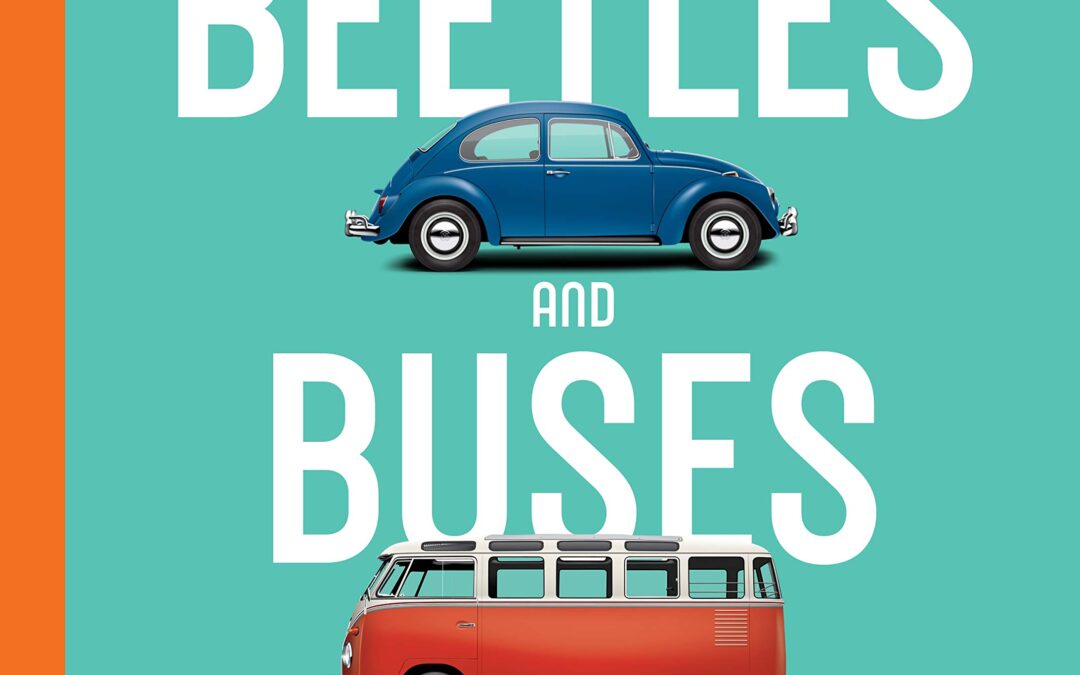
This illustrated history celebrates the 75th and 70th anniversaries of Volkswagen’s two most iconic vehicles, from the first Beetles spearheaded by Ferdinand Porsche in the 1940s to the buses that became synonymous with a generation.
Volkswagen is one of the most beloved brands in motoring history, thanks largely to two instantly recognizable vehicles: the Beetle (a.k.a. Bug) and the Bus. More than 23 million VW Beetles have buzzed into the world since 1945, while the VW Bus presaged the minivan by thirty-plus years. Volkswagen: Beetles and Buses examines and celebrates all aspects of the vehicles and the many cultural associations that have swirled around them for more than seven decades. The diminutive rear-engined and easily mass-produced Beetle became the most popular imported car in America during the 1960s. Its success was due to its familiar face, its wildly clever ad campaigns, and the sheer numbers produced. The equally compact yet spacious Bus (a.k.a. Kombi, Microbus, Type 2, Transporter, and simply “van”) has won millions of fans around the world with its practicality, simplicity, and design.
In this beautifully illustrated and authoritatively written celebration, author Russell Hayes looks back at the vehicles while focusing on the classic air-cooled VWs that ran into the late 1970s. Along the way, readers witness the Beetle and Bus at work and at play and learn about vehicle development and growing roles in popular culture, including star appearances in films like The Love Bug, Little Miss Sunshine, Footloose, Fight Club, The Big Lebowski, and Fast Times at Ridgemont High, as well as television shows like Lost and Once Upon a Time and on the covers of the Beatles’ Abbey Road and Bob Dylan’s Freewheelin’ album. The story is brought up to date with coverage of the New Beetle and plans for the VW Buzz, a modern electric version of the iconic Microbus due in 2022.
Volkswagen: Beetles and Buses deserves a place in the motoring libraries of VW owners, automotive enthusiasts, and those simply interested in pop culture. It’s the ultimate illustrated history of these beloved vehicles.
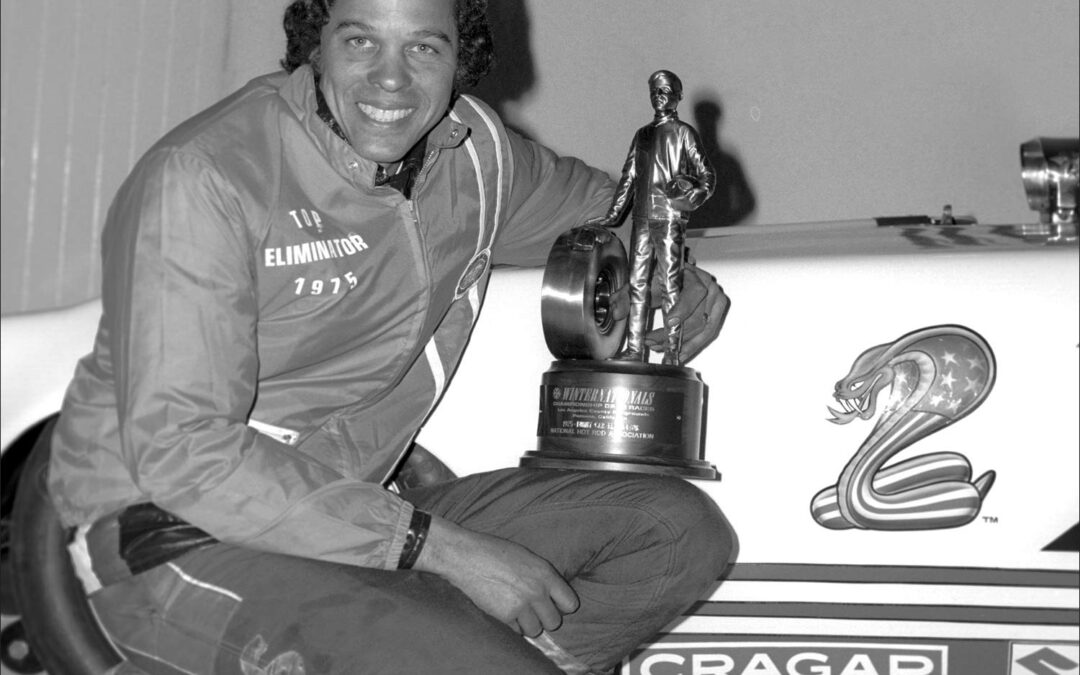
Don “The Snake” Prudhomme reveals for the first time ever his incredible life and career on and off of the drag strip.
Imagine spending a year with Don “The Snake” Prudhomme, having coffee together and talking about his life, his racing, his friends, and his family. He’d tell you about how he rose from being a high school drop-out who was painting cars to a respected Top Fuel dragster driver and successful businessman. You’d hear how he toured the country with Tommy Ivo and “The Hawaiian” Roland Leong, racing all the legends from “Big Daddy” Don Garlits to “The Golden Greek” [Chris] Karamesines.
He’d say how he met Tom McEwen and recall how they became the Snake and the Mongoose, leading to a career in Funny Cars that netted him four championships in a row. He’d talk about the thrill of first wins and owning his own teams but also the struggles of bad seasons, crashes and fires, broken parts, and broken contracts. Along the way, he’d speak about the people in his life, such as engine-builder Keith Black and NHRA president Wally Parks, and those who were killed in the wild and unpredictable sport of nitro racing.
It wouldn’t be only racing, though. Prudhomme would share lessons he learned about business and life from such varied sources as a neighbor in Granada Hills to Ford GT40 driver Dan Gurney. He also would talk about the importance of family: how his wife, Lynn, and daughter, Donna, changed his world and how finding out about his African-American roots opened his eyes to a culture and inheritance he’d always wanted.
This is the experience you’ll get in Don “The Snake” Prudhomme: My Life Beyond the 1320.
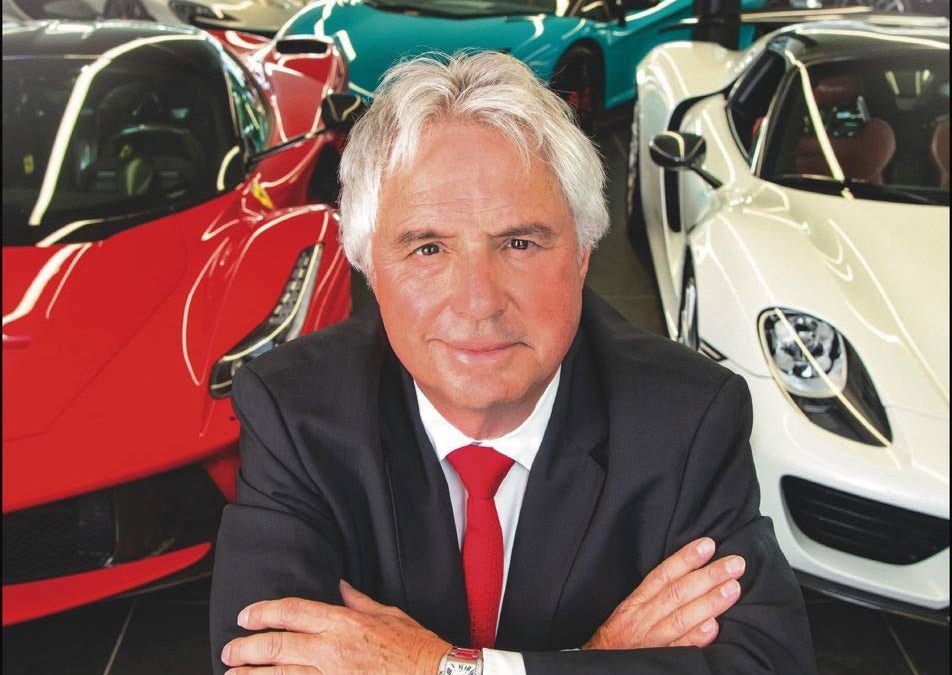
The car world is full of fascinating characters, but few have a story to tell quite as remarkable and inspirational as Tom Hartley.
Walking out of school at the age of 11, unable to read or write, Hartley set up his own business buying and selling cars. From that moment, he defied logic and ripped up the rule book on his way to the top. Today he runs one of the most successful independent family run performance and luxury car businesses in the world. He has built up an unrivaled reputation as “The Dealmaker.”
Tom has been at the top for over 40 years, survived and thrived through four recessions, and overcome three life threatening illnesses. In his own brutally honest words, Hartley tells his gripping story of a boy from a traditional Romany family who swapped the classroom for the cut-throat world of Glasgow’s car auctions, buying and selling his first car at the age of 12. Having decided to drive himself around illegally, he was only 15 when he had his first car crash, and they don’t come more spectacular than writing off a Ferrari Dino – nothing has ever been normal in the world of Tom Hartley!
Hartley had made his first million by the age of 17, but soon suffered major setbacks as his business went bust, and he found himself at risk of losing his sight without major surgery. Hartley started all over again, living in a mobile home with his wife and working from the back of a car. He had gone from hero to zero, but his burning desire to be the best saw him climb his way back to the top. His ability to clinch deals in some of the most bizarre places has become legendary, like buying a car in a sauna, while stuck in a traffic jam on a motorway, and even in a swimming pool!
Family has played a key part in the Tom Hartley story, his wife has been at his side all the way, and his two sons have followed closely in their father’s footsteps. Indeed Tom’s belief in family is one of the inspiring messages that comes through.
Hartley’s inspirational story is about the unshakeable belief in his own abilities, from a precocious schoolboy who had a dream, and then through sheer hard work and a burning desire to make the dream come true. This is not just a book for car enthusiasts but for anyone who has dared to dream. It’s a story that will inspire and motivate, and proves you can make the wildest dream come true if you want it badly enough.
Tom’s remarkable story is written with the collaboration of journalist Ken Gibson, for 24 years, award-winning Motoring Editor of The Sun newspaper.
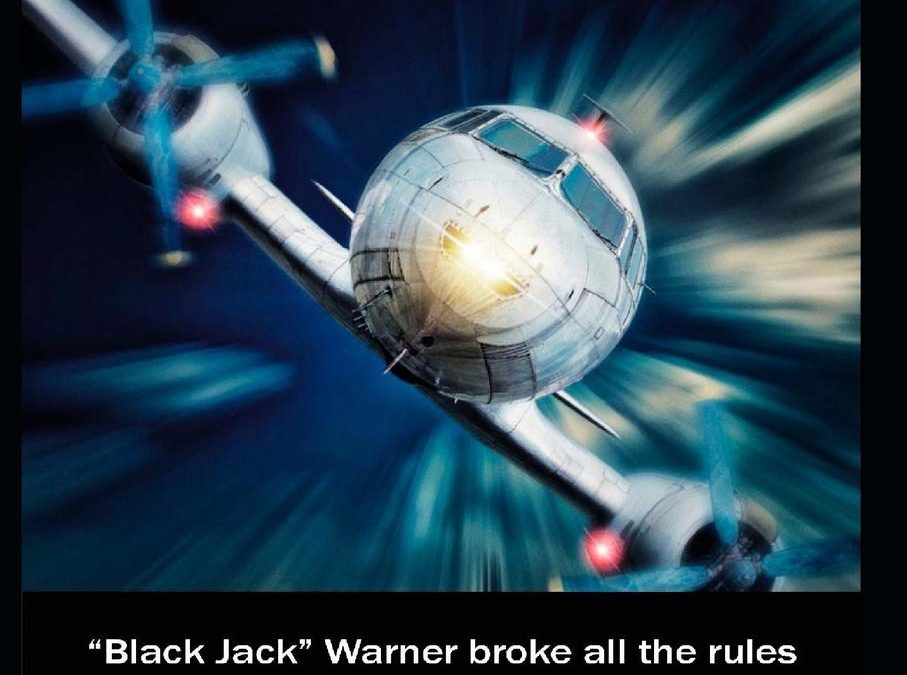
Jack Warner was the son of an Alaskan bush plane pilot. He shot out his TV when he was ten. Uncle Kenny taught him to make Old Fashioneds in the 5th grade.Jack learned to fly at twelve, braving storms, crash landings and wild animals to save lives. After crashing on a snowy glacier, he rebuilt the broken landing gear with bailing wire and duct tape.As an Air Force fighter pilot, he witnessed U.S. pilots being shot down over North Vietnam out of reach of our rescue helicopters. After scamming general’s jeeps and golf carts to get suspension parts, he built a bush plane. He rescued a downed pilot but the second one was killed. Urged to continue by a U.S. soldier who escaped from a Vietcong prison camp, he kept going. After rescuing 21 pilots, he earned the moniker, “Black Jack” Warner. After retiring from the Air Force, he headed for the good ‘ol USA. On the way home, a high stakes poker game in Hawaii changed his life. As a new private pilot, he flew celebrities, delivered priceless jewels and one of a kind collector cars. Jack piloted a TV news airplane but ended up crashing into the station’s helicopter.Warner bought “mothballed” planes and brought them back to life to start an air cargo business. Jack’s staff of “moles” went dumpster diving to get valuable intel info on competitors. Guerilla tactics like these helped him become the largest cargo carrier in the world.Jack once volunteered to fly a water dropping airplane, saving the lives of eight firefighters. But, he was the most proud of rescuing five Americans from Iraq, right under Saddam Hussein’s nose.His career of a never ending trampoline of ups and downs kept his life anything but boring.

In the 1950s and ’60s the British motorcycle industry was at its postwar peak, with its large-capacity high-performance bikes in strong demand all over the world. AJS/Matchless, BSA, Norton, Royal Enfield and Triumph were all making 100mph-plus big twins, with the king of them all, at least into the 1950s, being the mighty1000cc Vincents, while among the ton-up singles were the BSA Gold Star and the Velocette Venom and Thruxton. In this book veteran motorcycle writer Steve Wilson reviews the top-of-the-line bikes of all these manufacturers, first giving an introduction to the motorcycling scene in the period, with a particular look at the emergence of the Rockers, the black-leather too-fast-to-live-too-young-to-die bikers who developed a culture all their own, inspired indirectly by Marlon Brando behaving badly on his Triumph Thunderbird in the banned-in-Britain 1953 movie The Wild One. Then the motorcycle makers are dealt with alphabetically, with their big bikes described in detail and their performance, handling, strengths and weaknesses discussed. In addition to a wide selection of archive photographs, specially commissioned colour photography features examples of the outstanding bikes of the period: AMC/Matchless CSR 650 twins and their Norton Atlas-engined ‘Hybrid’ siblings, BSA A7SS 500, Gold Star singles, AIO Super Rocket and Rocket Gold Star 650 twins, Norton SS 500/600/650 twins, Velocette Venom and Thruxton 500, Royal Enfield Constellation 700 twin, Triumph pre-unit 500 and 650 twins and unit Bonneville 650, and finally the Vincent 1000 vee-twin.

In June 1978, eleven years after he quit Grand Prix motorcycle racing, Mike Hailwood returned to the Isle of Man TT races, probably the most prestigious and certainly the most demanding road race in the world. On a privately entered V-twin Ducati he won the Formula One race, beating the works Hondas of Phil Read and the late John Williams, and breaking the lap and race records.
It may have seemed a fluke; it certainly was a fairy-tale – until 1979. Fifth in the Formula One race, despite losing top gear and his battery, first in the Senior, and second by only 3.4 seconds in the Classic – probably the finest and closest-fought race the Island has ever seen. Hailwood proved, if anyone doubted, that he was still the greatest motorcycle racer of all time.
Mike the Bike – Again, written by his manager and friend, Ted Macauley, is the account of his dramatic comeback, from the original wild idea to his final race. More than this, though, it is a study of a remarkable man in a remarkable world, and of the races, the machines, and the men who ride them.

Your step-by-step guide to restoring a Mazda MX-5/Miata
An easy to follow guide to restoring a classic Mazda MX-5/Miata – the world’s favourite small sports car. This book takes you step-by-step through choosing a project car, looking the car over, planning the restoration, and buying parts and tools to perform the work. The comprehensive text is fully supported by high-resolution photographs, guiding you through stripping the car down, cutting out and repairing rust, restoration of interiors, replacing the hood, refurbishing the underside of the car including the floor pan, suspension, brakes, undersealing, reassembly, replacing the cam belt and waterpump, replacing engine seals and gaskets to cure common leaks. It also provides a guide to handy upgrades as you go along. Whether you are looking to restore to original condition or build an out-and-out track weapon, the techniques described in this book will assist you in getting the right base to start with. The book is based on an actual restoration of a vehicle carried out by the author, with before and after shots.

After World War II, suburbs proliferated around California cities as returning soldiers traded in their uniforms for business suits. After-hours leisure activities took on an island-themed sensuality that bloomed from a new fascination with Polynesia and Hawaii. Movies and television shows filmed in Malibu and Burbank urged viewers to escape everyday life with the likes of Gidget and Hawaiian Eye. Restaurants like Don the Beachcomber and Trader Vic’s sprang up to answer the demand for wild cocktails and even wilder décor. The culture–a strange hodgepodge of idols, torches, lush greenery and colorful drinks–beckoned men and women to lose themselves in exotic music and surf tunes. Authors Jason Henderson and Adam Foshko explore the state’s midcentury fascination with all things Tiki.
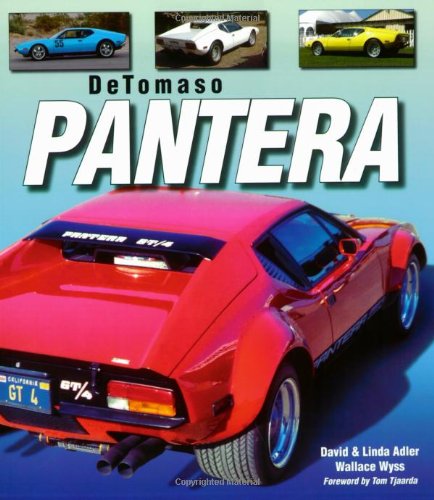
SOLD OUT
In recent years, interest in the DeTomaso marque has increased dramatically. Good Panteras are harder to find each year, and values continue to rise. What’s fascinating about the Pantera community is that no two owners seem to prepare their cars in the same way, and in fact completely original cars are a minority. Unlike in the Corvette, MoPar or Ferrari world where originality is worshipped, in the Pantera constellation, modifications and upgrades are for the most part, accepted and encouraged as long as they are done to a very high standard. This color picture book presents all of the models of Panteras that were offered by the factory in Italy, including the GTS, GT5, GT5-S and the very rare Group 4 race cars. In sharp contrast, mild to wild owner modifications of these cars are shown, including blowers, turbos, massive brakes and carbon fiber body panels, to name a few.

This is the definitive story of Triumph, told through 130 years of its magnificent motorcycles.
Created with support from Triumph and with a foreword from CEO Nick Bloor, The Art of the Motorcycle is a celebration of Triumph’s most beautiful bikes, and an essential companion for any fan.
Marlon Brando rides a Triumph 6T Thunderbird in The Wild Ones. The longest jump of Evil Knievel’s career was on a Triumph. Famous owners include Elvis, Bob Dylan, Brad Pitt and Prince Harry. From its birth in 1886, the Triumph brand has created some of the world’s finest – and most famous – motorcycles. This book is a celebration of that brand.
With previously unseen images from the Triumph archives, design sketches and behind-the-scenes information, this book is a chronological look at the most important and beautiful Triumph motorcycles, from its founding right up to the launch of the latest machine. Insightful text and stunning photography make this a must-have for all motoring enthusiasts.
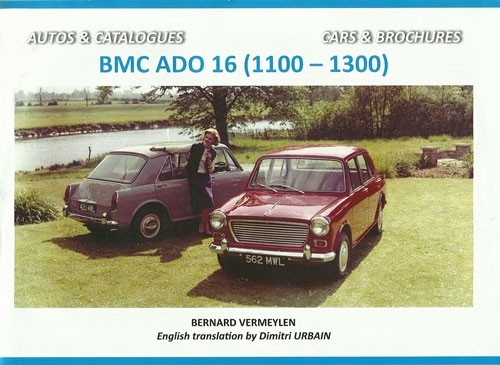
The BMC ADO 16 (Austin Drawing Office 16) Morris 1100 car was revealed to the international motoring press on 15th August 1962, a larger and worthy companion to the BMC Mini which had been launched in 1959 to worldwide acclaim. Both designs were the work of Alec Issigonis and featured transverse engines with the gearbox in the sump, driving the front wheels, groundbreaking technology at the time which has been universally adopted since, though not the gearbox in the sump. A further revolution was the suspension; the Mini had progressive springing by rubber cones, the work of rubber technician Dr. Alex Moulton which, together with rack-and-pinion steering, was responsible for the Mini’s incredible road-holding. The larger Morris/Austin 1100 series cars were fitted with a developed version named “Hydrolastic”. Suspension was still by Dr. Moulton’s rubber cones, but associated with a chamber filled with water and antifreeze and incorporating damper valves, which was connected to similar rear units via pipes and was a form of self-levelling. A unique solution to the problems associated with large differences between laden and unladen weights in small family cars.
Bernard Vermeylen’s fascinating book, with English and French text, studies the design, technologies and development of Issigonis’s and BMC’s hugely-successful ADO 16 design, which lasted for over 10 years and evolved from the Austin/Morris 1100 to the 1300 cars, which in turn were built in a bewildering variety of badge-engineered makes; Vanden Plas Princess, MG, Riley Kestrel and Wolseley, as well as being licence-built in Italy (Innocenti), Spain (Authi), Australia (Nomad), New Zealand and South Africa (Apache). BMC themselves produced GT versions, Traveller and Countryman estate cars and a variety of different spec. models for various markets.
Most of the illustrations in this book take the form of images from factory brochures and press photos, detailing the many changes BMC made to the ADO 16 in the decade it was in production. Specifications of different models, paint colours and sales prices are all listed in Bernard Vermeylen’s book, it is as comprehensive a survey as is possible and particularly interesting for the details published on the many export and licence-built variants of BMC’s 1100/1300 cars.
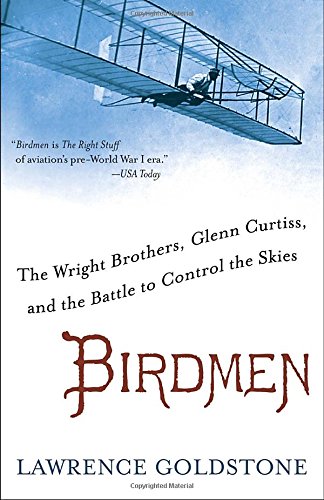
The feud between this nation’s great air pioneers, the Wright brothers and Glenn Curtiss, was a collision of unyielding and profoundly American personalities. On one side, a pair of tenacious siblings who together had solved the centuries-old riddle of powered, heavier-than-air flight. On the other, an audacious motorcycle racer whose innovative aircraft became synonymous in the public mind with death-defying stunts. For more than a decade, they battled each other in court, at air shows, and in the newspapers. The outcome of this contest of wills would shape the course of aviation history—and take a fearsome toll on the men involved.
Birdmen sets the engrossing story of the Wrights’ war with Curtiss against the thrilling backdrop of the early years of manned flight, and is rich with period detail and larger-than-life personalities: Thomas Scott Baldwin, or “Cap’t Tom” as he styled himself, who invented the parachute and almost convinced the world that balloons were the future of aviation; John Moisant, the dapper daredevil who took to the skies after three failed attempts to overthrow the government of El Salvador, then quickly emerged as a celebrity flyer; and Harriet Quimby, the statuesque silent-film beauty who became the first woman to fly across the English Channel. And then there is Lincoln Beachey, perhaps the greatest aviator who ever lived, who dazzled crowds with an array of trademark twists and dives—and best embodied the romance with death that fueled so many of aviation’s earliest heroes.
A dramatic story of unimaginable bravery in the air and brutal competition on the ground, Birdmen is at once a thrill ride through flight’s wild early years and a surprising look at the personal clash that fueled America’s race to the skies.

From Ross Brawn—one of the most successful figures in Formula One auto racing—comes a compelling insider’s account of what it takes to win, featuring practical advice for overcoming obstacles and becoming a champion both on and off the racetrack.
Formula One racing is a wildly popular global sport with millions of fans and billions more engineering dollars at stake. For four decades, Ross Brawn has been one of the most innovative technical directors and team principals in the high-stakes world of Formula One. He is considered the most successful competitor in the history of Formula One to date, and “the closest thing there is to a certifiable genius” (The Wall Street Journal). Leading Benetton, Ferrari, Honda, and Mercedes, he has worked with legendary drivers such as Michael Schumacher, Jenson Button, and Lewis Hamilton to make them Grand Prix champions. Now, in this fascinating book, presented as a frank conversation between Brawn and fellow Formula One competitor Adam Parr, Brawn reflects upon his career, shares the philosophies and methods that led to his success, and offers lessons that every leader working with teams—at work, play, or home—can use to achieve their own goals, too.
Brawn and Parr share details about the unique pressures of Formula One racing and the intense, cutthroat world they inhabited, where coming in second place is never good enough. Just as Phil Knight recounted his accomplishments and devastating setbacks in the building of the Nike brand in the New York Times bestseller Shoe Dog, this book also provides a blueprint for leading teams, imparting lessons such as “Embrace Humility,” “Invest in People and Culture,” “Strive for Simplicity, Manage Complexity,” and much more.

Build and modify your Jeep CJ to unlock its full potential with instruction from Jeep guru Michael Hanssen.
In Jeep CJ 1972-1986: How to Build & Modify, Michael covers all of the systems that can be upgraded to improve your Jeep’s performance. Upgrades include suspension components such as springs, shocks, and steering modifications; driveline components including differentials, transmissions, transfer cases, and axles; engine upgrades including engine swaps; wheel and tire upgrades; aftermarket accessories; armor such as skid plates and bumpers; brake upgrades; and more.
Identifying the Jeep CJ series vehicles as the most popular off-road vehicles of all time may actually qualify as an understatement. They really are that popular. The CJ series arguably started after World War II with the CJ-2A being introduced to the masses, and while the early CJs have their share of enthusiasts, the largest group of enthusiasts began their love affair with the AMC-powered Jeep CJ-5s beginning in 1972. Joined by the longer-wheelbase CJ-7 models introduced in 1976, the CJ models were wildly popular through their discontinuation in 1986, when the Wrangler was introduced. These were the only models originally equipped with V-8 engines in any meaningful way. This era combined the ruggedness of the early Jeeps with some of the advancements and horsepower of a more modern era; it makes a platform that is both fun to own and to modify.
Whether you are looking to get into serious off-roading or just want to make your classic CJ a little more fun, this book will be a valuable tool in your shop or library.

Explore the 1969 Plymouth Road Runner inside and out with this resource that showcases the wildly popular, affordable muscle car, its big-block engine options, and the brilliant marketing strategy that featured cartoon graphics and a beep-beep horn.
The 1969 Plymouth Road Runner attempted to appeal to potential buyers with a low-cost, lightweight, and potent bare-bones package. It also added a brilliant marketing strategy of partnering with a famous studio and a popular cartoon character.
The late 1960s was an interesting time in the automotive world. Muscle cars, as we now know them, were well established with all manufacturers joining the horsepower race. You could walk into the showroom for any brand from any manufacturer and find a variety of performance models. Competition being what it was, the manufacturers were looking for ways other than winning races to lure buyers into the showrooms and entice them to buy their products. Some tried to accomplish this with fancy marketing schemes and graphic paint packages and decals, and for the first time, some tried to win over buyers with price.
All In Detail series books include an introduction and historical overview, an explanation of the design and concepts involved in creating the car, a look at marketing and promotion, and an in-depth study of all hardware and available options, as well as an examination of where the car is on the market today. Also included is an appendix of paint and option codes, VIN and build-tag decoders, as well as production numbers.
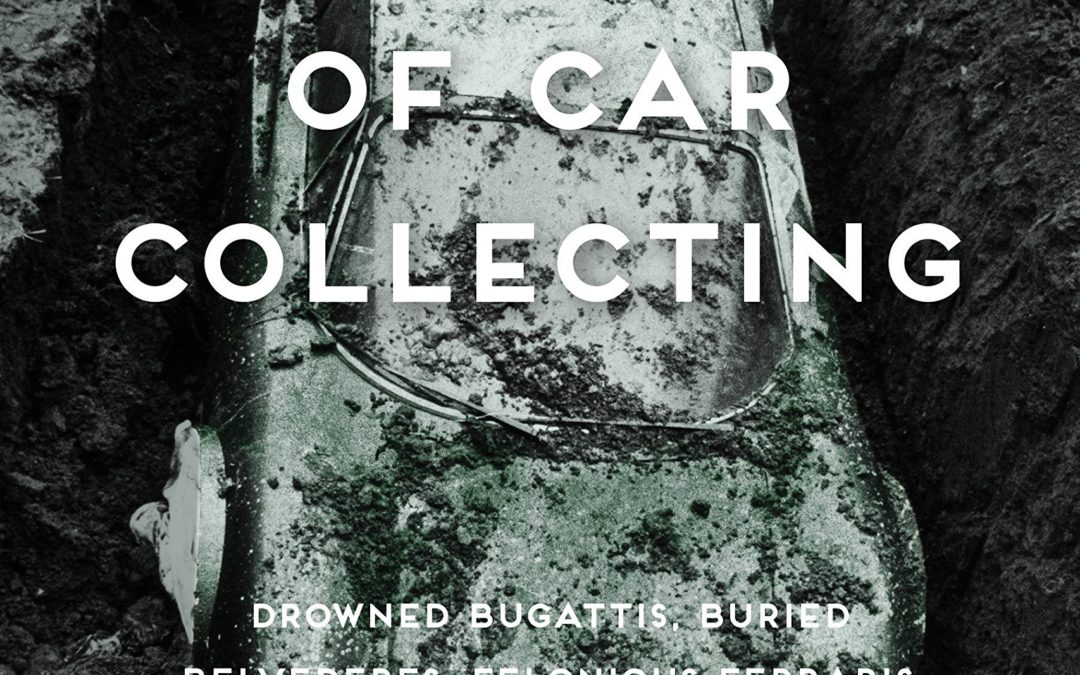
Drowned Bugattis, Buried Belvederes, Felonious Ferraris and other Wild Stories of Automotive Misadventure
Strange But True Tales of Car Collecting recounts the wildest car-collecting stories, focusing on tales of the most eccentric and over-the-top collectors and collections from around the world.
Most car collectors exhibit a healthy enthusiasm for their hobby with a tendency to dig into their favorite marques, chase parts, swap stories, and generally live the car-guy lifestyle. Some, however, step over that fine line between enthusiasm and obsession–and that’s the dusty place where these legendary car-collector stories come from.
Have you heard of the fellow who squirrelled away dozens of Chevelles, Camaros, and other classic muscle cars in semi-trailers? How about the president of Shakespeare fishing rods who sold 30 Bugattis for a mere $85,000? What about the English nobleman who cut up and buried his Ferrari horde in an elaborate insurance scam? Or how about the Duesenberg abandoned in a Manhattan parking garage for decades only to be uncovered by Jay Leno? They only get crazier from there.

From the acclaimed author of “Birdmen” comes a revelatory new history of the birth of the automobile, an illuminating and entertaining true tale of invention, competition, and the visionaries, hustlers, and swindlers who came together to transform the world.
In 1900, the Automobile Club of America sponsored the nation s first car show in New York s Madison Square Garden. The event was a spectacular success, attracting seventy exhibitors and nearly fifty thousand visitors. Among the spectators was an obscure would-be automaker named Henry Ford, who walked the floor speaking with designers and engineers, trying to gauge public enthusiasm for what was then a revolutionary invention. His conclusion: the automobile was going to be a fixture in American society, both in the city and on the farm and would make some people very rich. None, he decided, more than he.
“Drive!” is the most complete account to date of the wild early days of the auto age. Lawrence Goldstone tells the fascinating story of how the internal combustion engine, a theory looking for an application, evolved into an innovation that would change history. Debunking many long-held myths along the way, “Drive!” shows that the creation of the automobile was not the work of one man, but very much a global effort. Long before anyone had heard of Henry Ford, men with names like Benz, Peugeot, Renault, and Daimler were building and marketing the world s first cars.
Goldstone breathes life into an extraordinary cast of characters: the inventors and engineers who crafted engines small enough to use on a horseless carriage; the financiers who risked everything for their visions; the first racers daredevils who pushed rickety, untested vehicles to their limits; and such visionary lawyers as George Selden, who fought for and won the first patent for the gasoline-powered automobile. Lurking around every corner is Henry Ford, a brilliant innovator and an even better marketer, a tireless promoter of his products and of himself.
With a narrative as propulsive as its subject, “Drive! “plunges us headlong into a time unlike any in history, when near-manic innovation, competition, and consumerist zeal coalesced to change the way the world moved.

About Fast & Faster by “Chargin’ Charlie Hayes”: This is a book about “Big Time” Professional SCCA, USRRC and CAN-AM Road Racing. The author, Charlie Hayes, was once named a Top Ten Worldwide Racing Driver in the motoring journal Autoweek. These are his stories. This is not a full autobiography; rather it’s an account of Charlie’s experiences of being a full time racing driver from 1958 through 1968, a wildly innovative era in Road Racing. Enjoy these “Insider” stories!

The E36 was the embodiment of the luxury sports sedan, and the standard that other manufacturers strived to reach. And as such, the BMW 3 Series became wildly popular with BMW manufacturing 2.67 million E36 cars worldwide from 1992 to 1999. The new E36 featured a more aerodynamic design, potent dual overhead cam engine, multilink rear suspension, and a more luxurious interior than its predecessor.
The E36 BMW seamlessly blended exhilarating performance with refined appointments and produced a comfortable yet aggressive driving machine that appealed to a wide audience. Although the stock BMW is a more-than-capable sports sedan, veteran author Jeffrey Zurschmeide delves into all the different methods for extracting more performance, so you can make your E36 even more potent. He explains how to upgrade handling and control through installation of aftermarket coil-over springs, bushings, sway bars, and larger brakes. Producing more power is also a priority, so he shows you how to install and set up a cold-air intake, ignition tuners, and exhaust system components. You are also guided through work on cylinder heads, cams, and pistons. In addition, you’re shown the right way to install superchargers and turbo kits. If your 3 Series is making more power, then you need to get that power to the ground; guidance is provided for upgrading the transmission and limited-slip differentials.
The BMW 3 Series has set the benchmark for performance and luxury. But even at this benchmark, these cars can be dramatically improved. Each major component group of the car can be modified or upgraded for more performance, so you can build a better car that’s balanced and refined. If you want to make your E36 a quicker, better handling, and more capable driving machine, this book is your indispensable guide for making it a reality.






















